Menstrual cramps, medically known as dysmenorrhea, are a common challenge for many women. These cramps are often a normal part of the menstrual cycle, but their severity can vary widely. While some women experience mild discomfort, others face severe, debilitating pain that impacts daily life. The uterus contracts to shed its lining, leading to these painful sensations. Understanding the root cause of this pain and knowing how to find effective relief is essential for every woman. In this guide, we will explore how to manage menstrual cramps, from understanding the causes to practical remedies, including natural solutions.
What are Menstrual Cramps?

Menstrual cramps refer to the pain and discomfort experienced in the lower abdomen or pelvic region during a period. These cramps are the result of the uterus contracting to help expel the lining. While mild cramps are considered normal, severe or chronic pain can be an indication of underlying issues that may need medical attention.
Common Symptoms of Menstrual Cramps
Menstrual cramps are usually accompanied by a variety of symptoms that can differ from person to person.
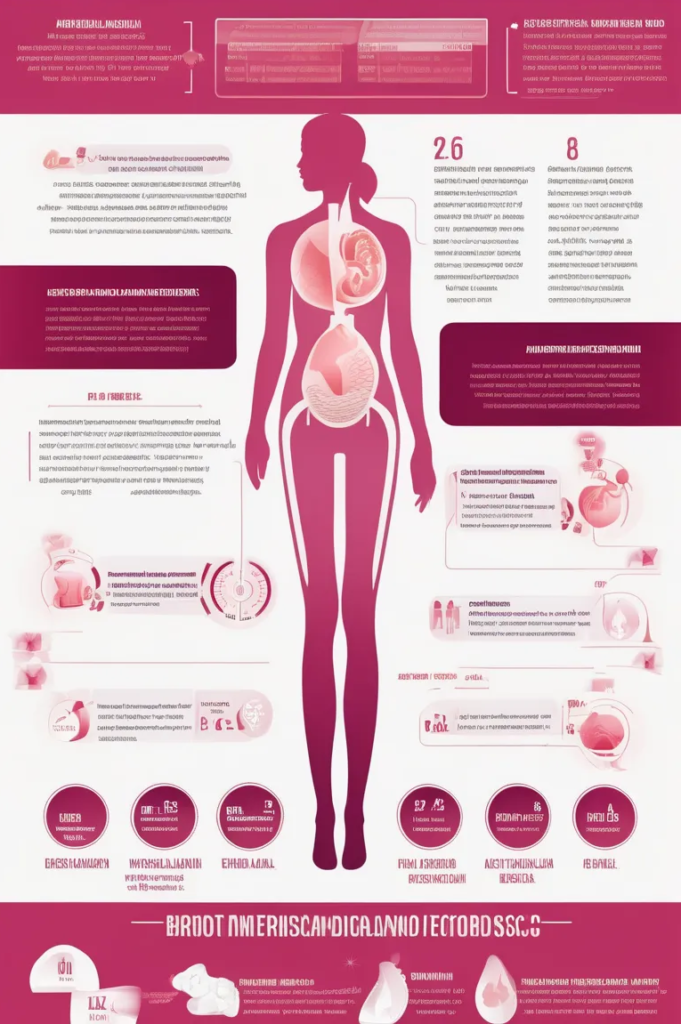
Some of the most common signs include:
- Dull pain or throbbing in the pelvic area
- Pain radiating to the lower back
- Nausea or upset stomach
- Headaches and migraines
- Fatigue or general tiredness
Recognizing these symptoms can help in early intervention, making it easier to manage menstrual cramps and find the right relief methods.
Causes of Menstrual Cramps
The main cause of menstrual cramps is the release of prostaglandins, which are hormones that cause the uterus to contract. Higher levels of prostaglandins can result in more intense and painful cramps. In some cases, severe pain could be linked to other health conditions.
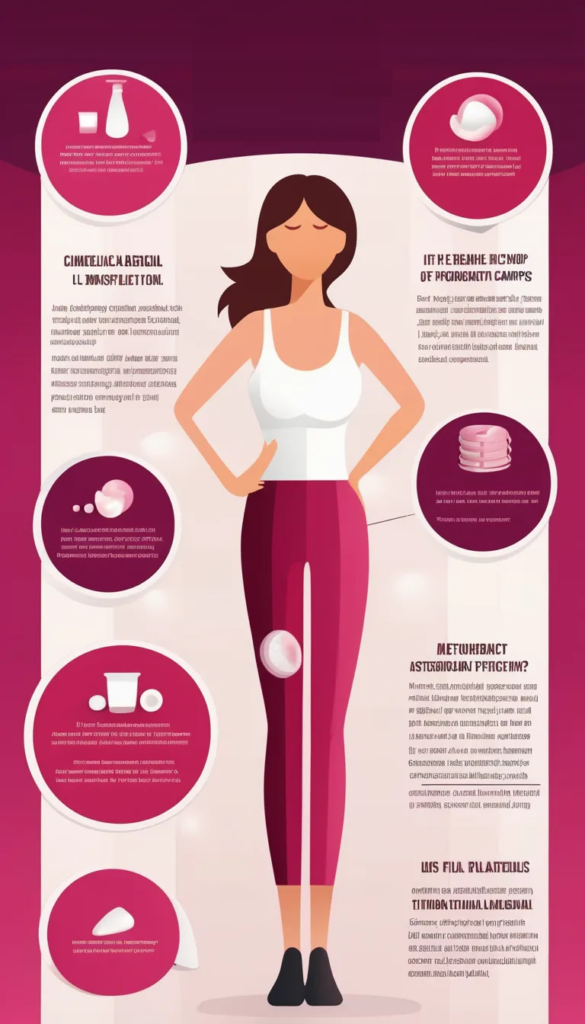
Here are some common causes:
- Prostaglandin release: Higher levels can lead to more severe pain.
- Strong uterine contractions affect nearby blood vessels, leading to reduced blood flow.
- Fibroids: Non-cancerous growths in the uterus that can increase pain.
- Endometriosis: A condition where tissue similar to the uterine lining grows outside the uterus.
- Pelvic Inflammatory Disease (PID): An infection in the reproductive organs causing inflammation and pain.
- Stress and emotional factors: High-stress levels can amplify period discomfort.
Understanding the causes can help you take preventive steps to manage menstrual cramps effectively.
Prevention of Menstrual Cramps
While it’s not always possible to prevent menstrual cramps entirely, adopting certain lifestyle habits can significantly reduce their intensity.
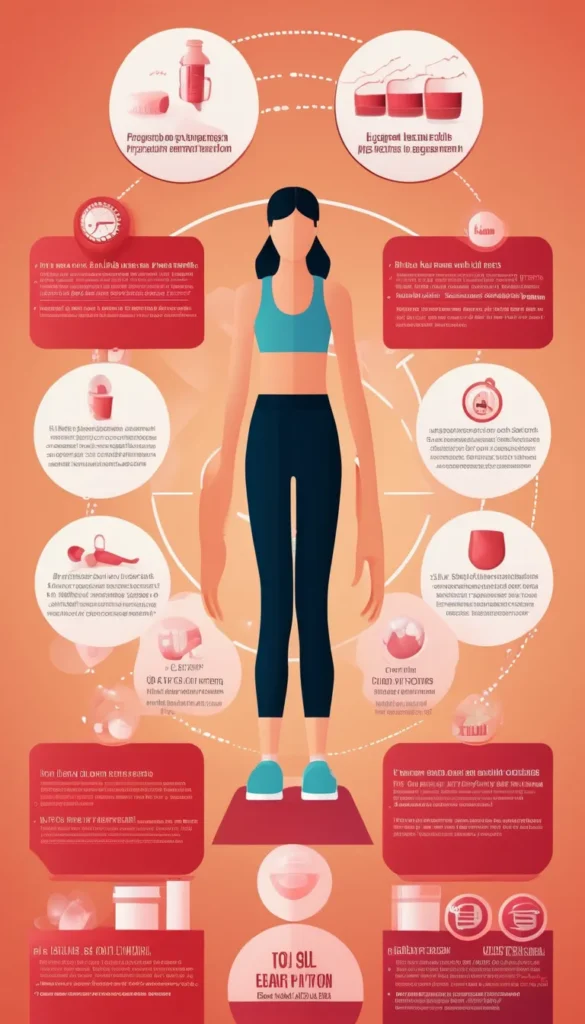
Here are some tips to help manage menstrual cramps:
- Healthy Lifestyle: Eating a balanced diet rich in fruits, vegetables, and whole grains can contribute to overall well-being.
- Regular Exercise: Gentle exercises like yoga, stretching, and light cardio can improve blood flow and ease pain.
- Adequate Hydration: Drinking plenty of water can help reduce bloating and ease discomfort.
- Stress Management: Techniques such as deep breathing, meditation, and mindfulness can lower stress levels and alleviate pain.
- Supplements: Calcium, magnesium, and vitamin D can help reduce inflammation and cramps.
Implementing these habits can make a noticeable difference in how you manage menstrual cramps over time.
Effective Treatments for Menstrual Cramps
For those who experience painful menstrual cramps, several treatment options are available, ranging from medications to natural remedies. It’s crucial to consult with a healthcare professional before beginning any treatment.
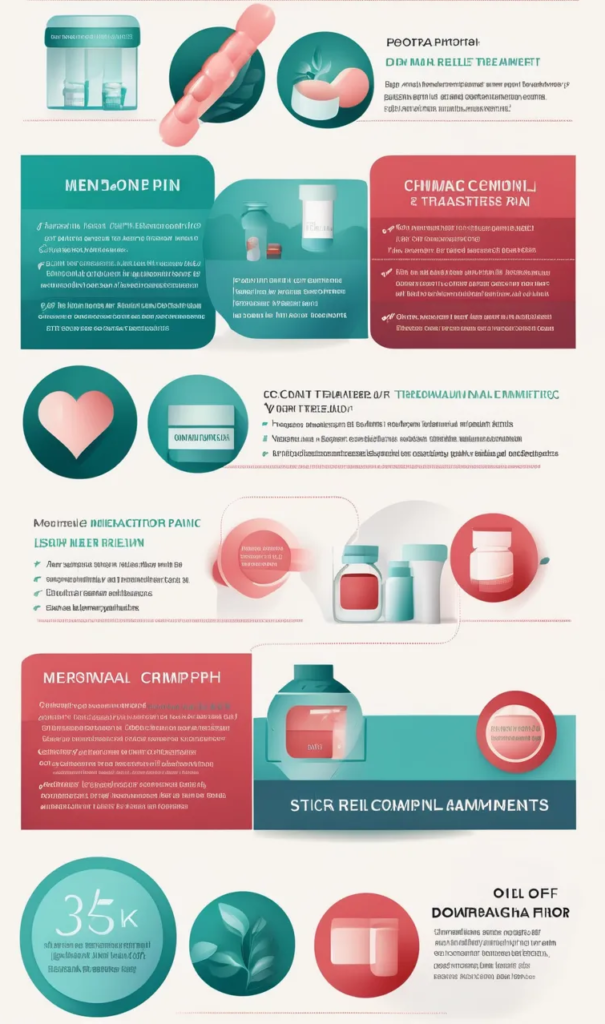
Here are some common options:
Medications
- Over-the-counter pain relief: Non-steroidal anti-inflammatory drugs (NSAIDs) like ibuprofen can be effective for mild to moderate pain.
- Hormonal treatments: Birth control pills, patches, or hormonal IUDs can help regulate periods and reduce cramps.
- Prescription medications: In severe cases, a doctor may prescribe stronger pain relief or hormone therapy.
Natural Remedies for Menstrual Cramp Relief
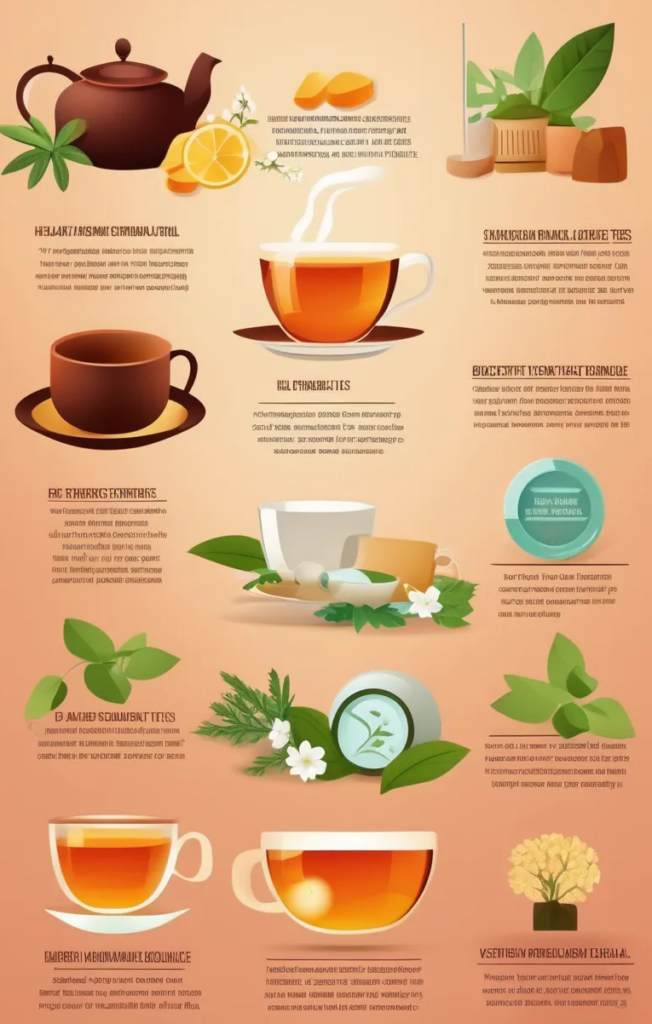
If you prefer a natural approach, several remedies can help manage menstrual cramps without medication:
- Heat Therapy: Applying a heating pad or hot water bottle to the abdomen can relax the uterine muscles, providing relief. Heat therapy can increase blood flow and reduce pain sensations.
- Rest: Quality sleep and adequate rest are crucial, especially if cramps are severe. A consistent sleep schedule helps the body recover faster.
- Exercise: Although it might be the last thing on your mind during painful cramps, light exercises like walking, yoga, or stretching can release endorphins, the body’s natural painkillers.
- Herbal Teas: Teas like chamomile, peppermint, ginger, and lavender can soothe the digestive system and help ease muscle contractions.
- Massage: A gentle abdomen massage using essential oils like lavender, sage, or rosemary can provide a calming effect, reducing pain and inflammation.
Top Products for Menstrual Cramp Relief
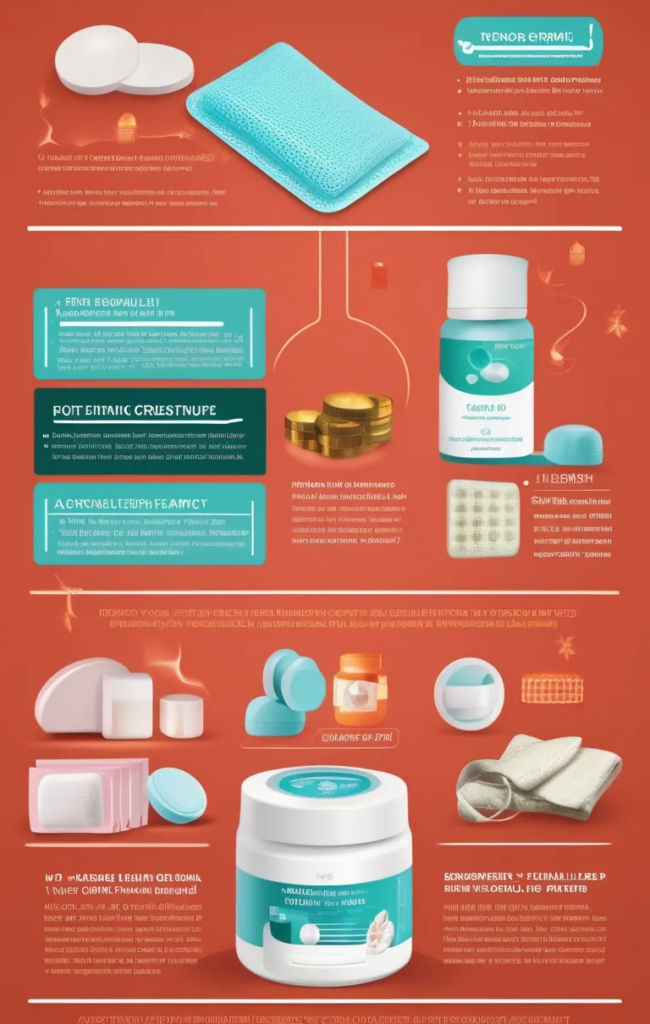
Several products are designed to specifically address period discomfort, making it easier to manage menstrual cramps:
- Heating Pads: Electric or microwaveable pads provide continuous heat and can help reduce muscle tension.
- Heating Patches: Adhesive patches that deliver warmth for several hours, offering a convenient and portable option for on-the-go relief.
- Roll-on Pain Relievers: Roll-ons with medicated essential oils, like eucalyptus and peppermint, can soothe abdominal pain.
- Herbal Supplements: Supplements like evening primrose oil or fish oil may help reduce inflammation and pain.
These tools can be a great addition to your pain relief strategy, allowing you to manage menstrual cramps more effectively.
Conclusion
Menstrual cramps are a common experience for women, but they don’t have to be unbearable. By understanding the root causes and knowing the best ways to manage them, you can take control of your period pain. Whether you prefer medical treatments or natural remedies, the key is to find what works best for you. Remember, if you experience severe pain that interferes with your daily life, it’s essential to consult a gynecologist for guidance and possible treatment options. Using these tips and remedies can help you manage menstrual cramps and enjoy a more comfortable menstrual cycle.
For more tips on how to manage menstrual cramps, try incorporating some of these methods and see what brings you the most relief!
Frequently Asked Questions
What causes menstrual cramps?
Menstrual cramps are primarily caused by the release of hormones called prostaglandins. These hormones trigger uterine contractions to shed the lining, causing pain. High levels of prostaglandins can lead to more intense cramping. Conditions like endometriosis, fibroids, and pelvic inflammatory disease (PID) can also contribute to severe menstrual pain, so it’s essential to monitor symptoms.
Are menstrual cramps normal, or should I be concerned?
Mild to moderate menstrual cramps are normal, especially in the first few days of your period. However, if the pain is severe, lasts longer than usual, or disrupts daily activities, it may indicate an underlying issue like endometriosis or fibroids. Consulting a gynecologist can help determine if further evaluation or treatment is necessary.
What natural remedies can help relieve menstrual cramps?
Several natural remedies can effectively manage menstrual cramps. These include applying heat therapy with heating pads, drinking herbal teas like chamomile or ginger, exercising, and practicing relaxation techniques like deep breathing. Gentle abdominal massages with essential oils such as lavender can also provide relief by improving blood flow and reducing muscle tension.
How can diet affect menstrual cramps?
A healthy diet can significantly reduce the severity of menstrual cramps. Foods rich in omega-3 fatty acids, like fish, nuts, and seeds, have anti-inflammatory properties. Avoiding processed foods, caffeine, and excessive sugar can help reduce bloating and discomfort. Including leafy greens, whole grains, and foods high in magnesium and calcium can also be beneficial for managing menstrual pain.
What exercises are best for managing menstrual cramps?
Gentle exercises can relieve cramps by increasing blood circulation and releasing endorphins. Low-impact activities like walking, yoga, stretching, and Pilates are excellent choices. Focus on exercises that involve stretching the lower back, hips, and abdomen. Even a short, light workout can help relax muscles and elevate your mood, reducing pain intensity.
When should I see a doctor about menstrual cramps?
You should consult a doctor if menstrual cramps are unusually severe, cause significant discomfort, or disrupt your daily life. Also, see a healthcare professional if you notice other symptoms like heavy bleeding, irregular cycles, pain during intercourse, or bleeding between periods. These could be signs of conditions like endometriosis, fibroids, or PCOS that require medical evaluation.
Can stress make menstrual cramps worse?
Yes, stress can increase the intensity of menstrual cramps. High levels of stress can lead to hormone imbalances, which may trigger more severe uterine contractions. Practicing stress management techniques like deep breathing, mindfulness, yoga, and meditation can help alleviate symptoms. Regular relaxation practices can contribute to a more comfortable menstrual cycle.
What over-the-counter medications can help with menstrual cramps?
Over-the-counter (OTC) pain relievers like ibuprofen, naproxen, and aspirin can effectively reduce menstrual pain by lowering inflammation. These medications are best taken at the onset of cramps for maximum effectiveness. Always follow the recommended dosage and consult a healthcare provider if you have concerns about long-term use or if the pain persists despite medication.
How does heat therapy help manage menstrual cramps?
Heat therapy works by relaxing the muscles of the uterus, increasing blood flow, and reducing the severity of cramps. Applying a heating pad or hot water bottle to the lower abdomen can provide quick relief. Heat patches are another convenient option, offering consistent warmth for hours. The warmth interrupts pain signals, providing comfort without medication.
Can hormonal birth control help with menstrual cramps?
Yes, hormonal birth control can help manage menstrual cramps by regulating hormone levels and reducing the build-up of the uterine lining, leading to lighter periods. Options like birth control pills, patches, or hormonal IUDs may decrease the frequency and intensity of cramps. Always discuss with a gynecologist to determine if hormonal contraceptives are the right choice for your needs.

